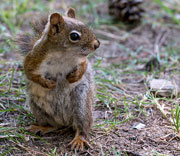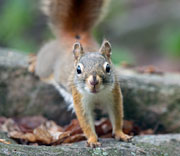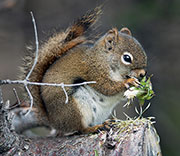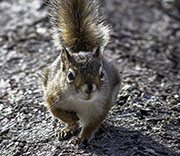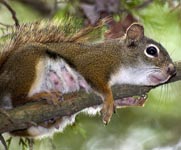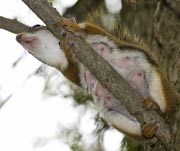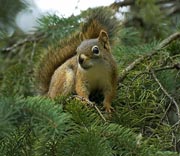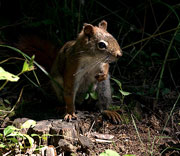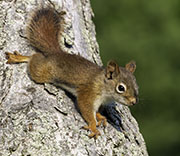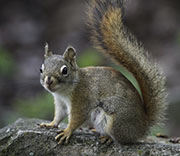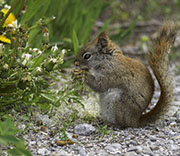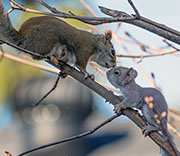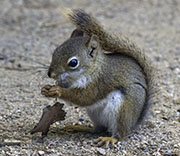
Red Squirrel (Tamiasciurus hudsonicus)
We nicknamed Red Squirrels “Campsite Devils”. When we go on canoe trips in Algonquin, every campsite in the interior has a resident Red Squirrel. They always cause havoc by getting into our food before we get a chance to hang it up. In the early hours of the morning, they drop pine cones on our tents and on our heads. And every now and then they scold us with their loud chatters while stamping their feet and flicking their tails. They chase away the cute chipmunks or other competitors with real vengeance.
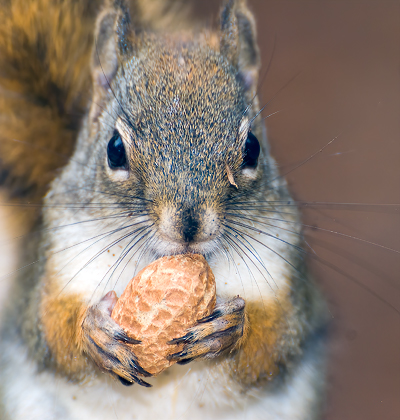 We have them in our backyard and they are just as feisty and territorial, chasing away the much larger grey squirrels who rarely put up a fight when confronted by these red terrors.
We have them in our backyard and they are just as feisty and territorial, chasing away the much larger grey squirrels who rarely put up a fight when confronted by these red terrors.
Red squirrels don’t hibernate during the winter and stay active throughout the season. If you spot a red squirrel hurrying about during the fall, it’s likely because he’s on a mission to prepare for the upcoming cold months by collecting and storing food. Hoarding great amounts of food ensures their survival in even the coldest weather. They use tree cavities, underbrush piles, or dens for storage.
If you see a mushroom on a tree branch, that’s likely the doing of a Red Squirrel who use this method to sun dry the mushroom before storage.
Red Squirrels climb to the tops of trees and bite off branches and pine cones, letting them fall to ground for later retrieval. Sometimes they make large piles of pine cones.
Red Squirrels don’t just eat nuts and seeds. They are omnivores, and their diets extend to include flowers, berries, bugs, mice, eggs, and small birds. They also eat a variety of mushroom species, including some that are deadly to humans.
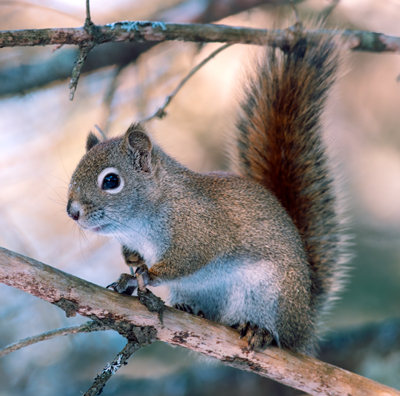 Although primarily a creature of coniferous forests, the diurnal red squirrel also inhabits deciduous woodlands and can even be found in suburban and near-urban areas throughout their range. Their adaptability in terms of both habitat and food sources has made them remarkably successful.
Although primarily a creature of coniferous forests, the diurnal red squirrel also inhabits deciduous woodlands and can even be found in suburban and near-urban areas throughout their range. Their adaptability in terms of both habitat and food sources has made them remarkably successful.
The female is only ready to breed for one day so when she is ready several males will chase after her for the chance to mate. The nest is made from grass in tall trees, preferably conifers as they provide better support and protection. Young red squirrels are usually born in April through to early May. Tiny and naked at first, they grow quickly and within a month are almost fully furred. They reach full size in about four months.
The high strung, energy packed Red Squirrel lives in the fast lane. They race through the trees at lightning speeds, jumping from branch to branch, tree to tree with unbelievable agility and skill. Moving so incredibly fast, you would wonder how any predator would be able to catch them. Predators include martens, fishers, mink, weasels, foxes, coyotes, hawks, owls, bobcats and lynx. Many are killed by domestic dogs and cats. Another main cause of death is automobiles.
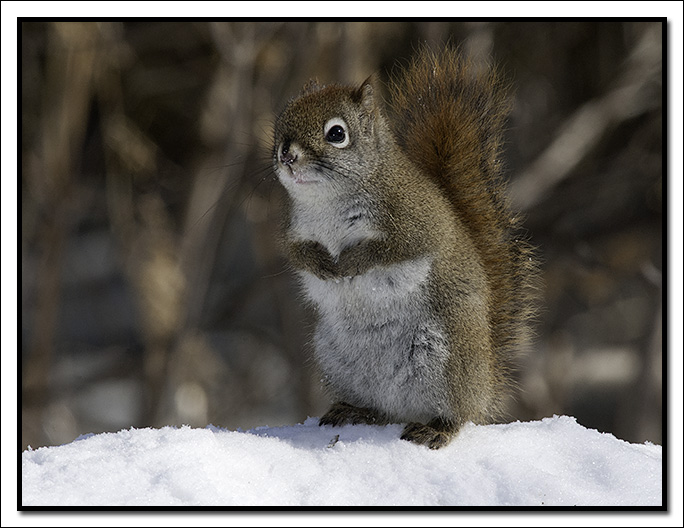
Red Squirrels are attracted to bird feeders
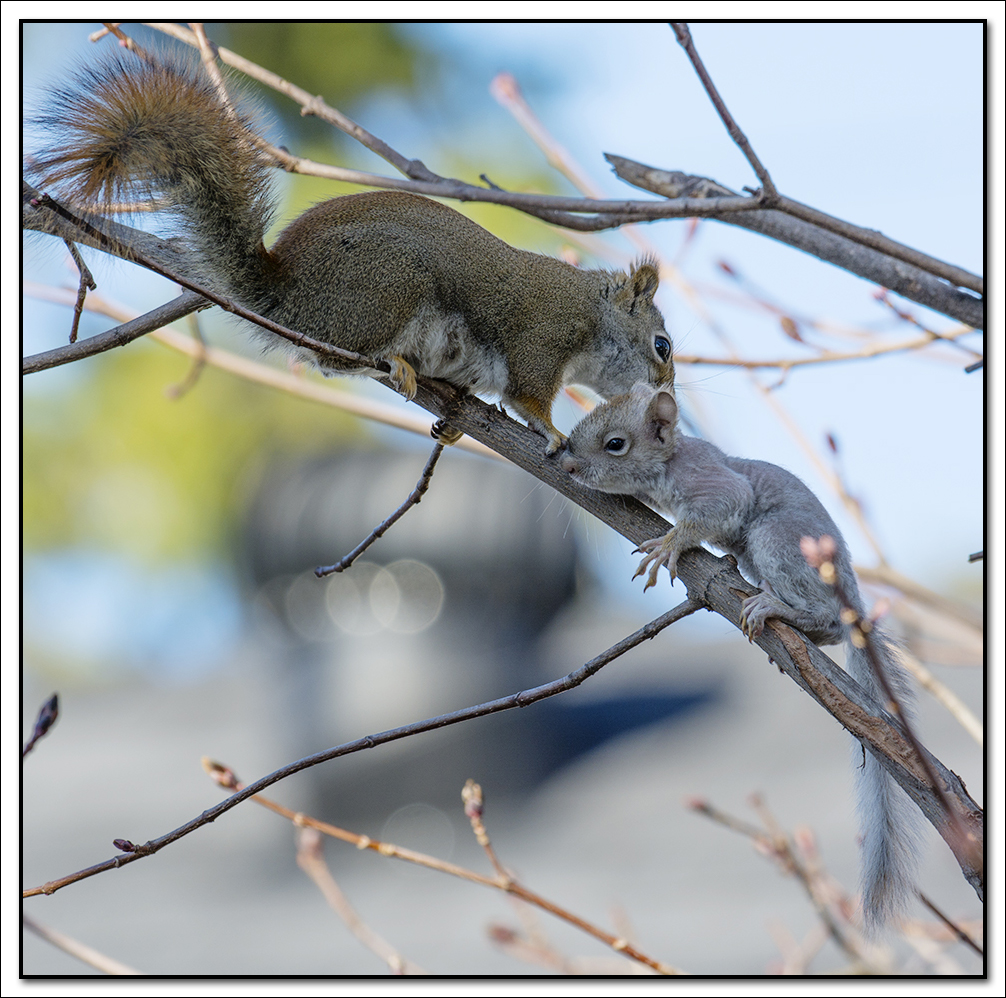
Baby Red Squirrel being scolding by mother for leaving the nest. Perhaps they were evicted from the nest .
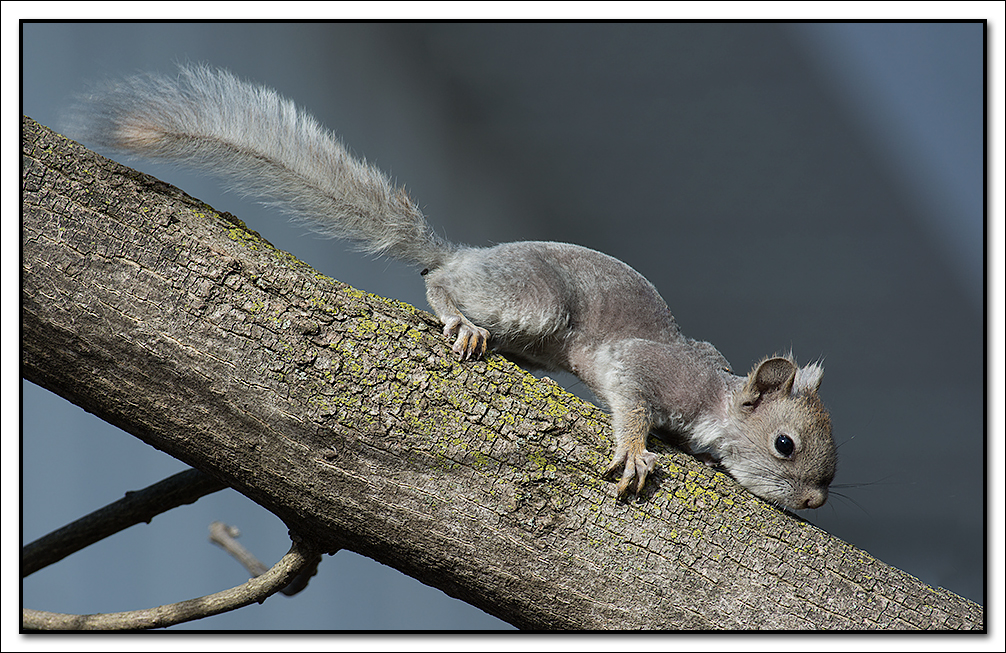
Baby Red Squirrels are hairless at birth, but start growing hair quickly and within a month are fully furred.
